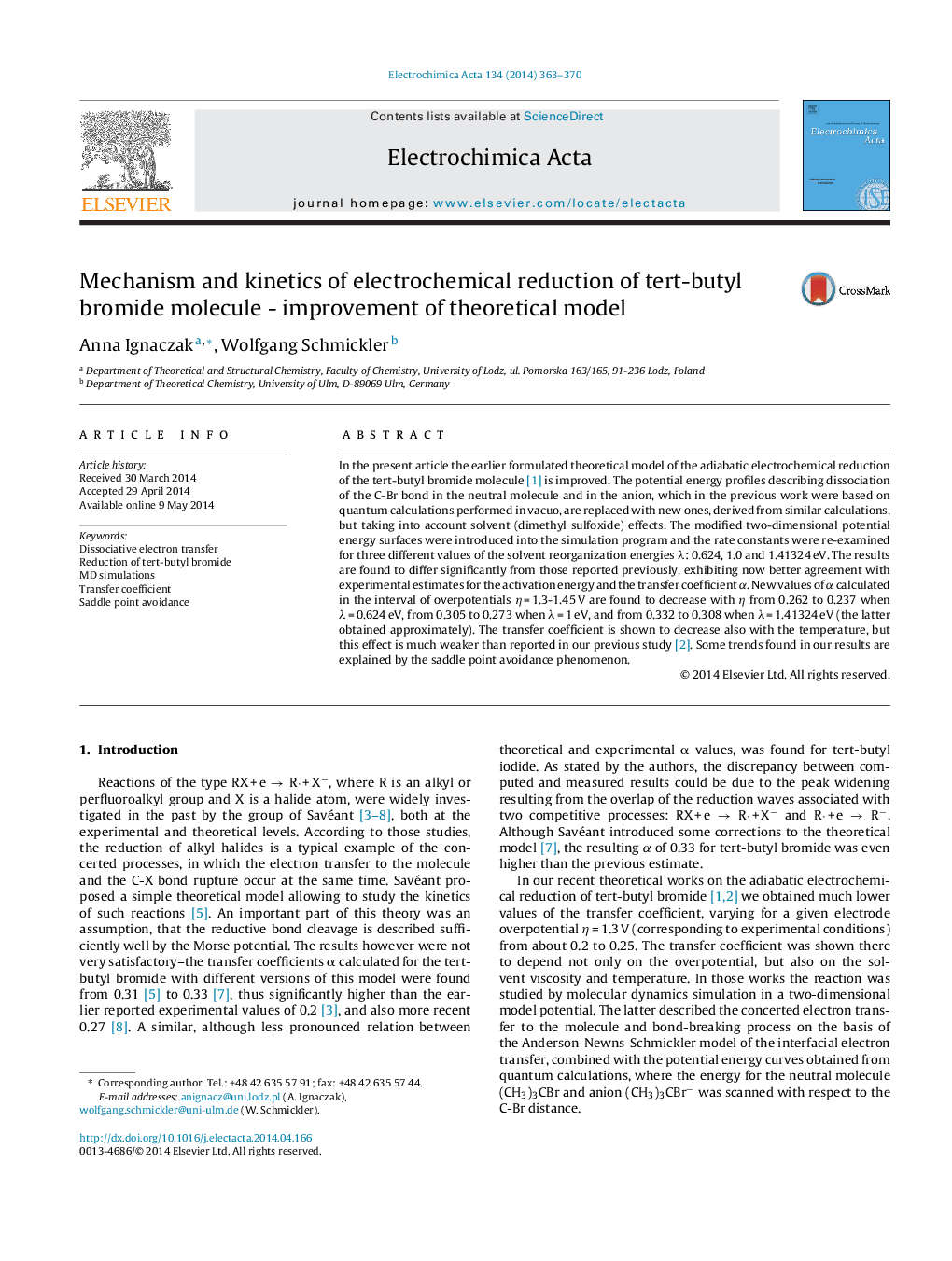| Article ID | Journal | Published Year | Pages | File Type |
|---|---|---|---|---|
| 185683 | Electrochimica Acta | 2014 | 8 Pages |
•New potential energy surface is proposed for electrochemical reduction of t-BuBr.•2D MD simulations are performed to analyse reaction kinetics and mechanism.•Different solvent reorganization energies and other parameters are tested.•The temperature effect on the transfer coefficient is examined.
In the present article the earlier formulated theoretical model of the adiabatic electrochemical reduction of the tert-butyl bromide molecule [1] is improved. The potential energy profiles describing dissociation of the C-Br bond in the neutral molecule and in the anion, which in the previous work were based on quantum calculations performed in vacuo, are replaced with new ones, derived from similar calculations, but taking into account solvent (dimethyl sulfoxide) effects. The modified two-dimensional potential energy surfaces were introduced into the simulation program and the rate constants were re-examined for three different values of the solvent reorganization energies λ: 0.624, 1.0 and 1.41324 eV. The results are found to differ significantly from those reported previously, exhibiting now better agreement with experimental estimates for the activation energy and the transfer coefficient α. New values of α calculated in the interval of overpotentials η = 1.3-1.45 V are found to decrease with η from 0.262 to 0.237 when λ = 0.624 eV, from 0.305 to 0.273 when λ = 1 eV, and from 0.332 to 0.308 when λ = 1.41324 eV (the latter obtained approximately). The transfer coefficient is shown to decrease also with the temperature, but this effect is much weaker than reported in our previous study [2]. Some trends found in our results are explained by the saddle point avoidance phenomenon.
Graphical abstractFigure optionsDownload full-size imageDownload as PowerPoint slide
